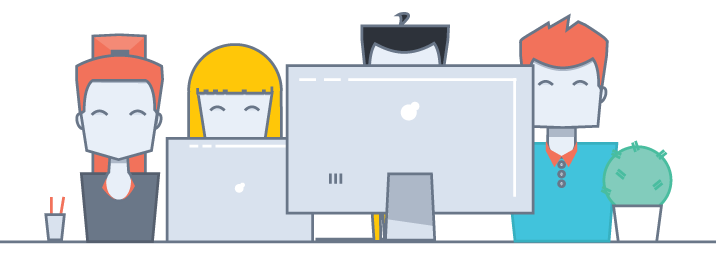Team as a Service
There are huge costs associated with startups and early-stage companies, and nobody with the right skill set would want to get on board with an idea that it may not work. We heard many times founders of startups saying that they have an idea for a startup, they have the vision, they have the market, they have the social connections to pull something through, but they lack when it comes to having a technical team to turn that idea into reality, and that’s how an idea usually dies.

Traditionally, the development teams cater to the higher-end spectrum with higher cost ( Corporates and large scale clients) because that is where the big money is, especially in the US.
We have realised very few teams cater to early stage companies, cause from their perspective it is difficult to work with them due to their very specific needs. And we are specializing in that very specific need.
Pricing and quality
When it comes to choosing a service company that would be best for your startup, you have to choose between four dimensions: 1) The price, 2) The quality, 3) The scope, 4) And the time.
If you want to get something really cheap, then you can probably go to www.odesk.com, hire a freelancer, manage everything by yourself, and that’s it. But while doing that, you will have to sacrifice the other three. It will either take too much time, the scope is going to be small, or the quality is going to be low, so you are not doing anything profitable, but just playing around with the dimensions.
We are concentrating on the middle level. We do a reasonable timeframe as agreed upon with the client, a reasonable scope (with the startups the scope has to move around the most) and we do not compromise on the quality. That means that our pricing is also on a reasonable scale.
Competition
There are few to no competitors who specialize on the web stack on top of blockchain technology and the integration of blockchain technology with the web stack. We do not know of any team that has sufficient experience with UI/UX needs of crypto startups. Which might be one the most difficult UI/UX to develop, due to the private public key setup.
Any startup with whom we work with, we have close partnerships and an ongoing relationship.
This essentially means that anything new we discover, anything new we find in the market, our talks with potential investors, with intellectual property holders, with attorneys, and anything other we can find due to many connections we have and our very unique position in the market, we offer them to our clients as an added value of information.
This is of huge value to any startup. Information especially in fast moving market is incredibly valuable. As we are growing our team, our connections, and the startups we work with, our information pull is also growing and therefore we are becoming more and more capable of predicting the market and positioning ourselves better, and then communicating these findings to the partners we work with (which is a huge added value in itself).
Our work process
What we normally do is:
We have an introductory talk with startup founders, where they show us their idea and explain to us exactly what they want, how they want it, and what the vision is. It is really an open end discussion to see whether our services are fit for them, but also to see if their vision and their personality it’s fit for us.
If everything works out after the initial discussion, we then proceed to the next steps. It mainly depends on the business model, but if the questions are technical, we usually require to meet in person with the founders. We call this “Week Zero”, a form of brainstorming where the founder either comes over to our team here in South-East Europe, or a part of our team flies over to wherever the client is.
Week Zero lasts from one to three weeks, and during this time we work for about 10-12 hours with the client where we put everything down on paper, figure every nook of their business model, every potential failure, every potential technical issues, any scaling issues, any timelines, and pretty much everything else. At that point, we’re almost like an idea incubator company. After this period ends, clients get a much better idea of what they’re doing, and what they should be doing, and we get to understand what the product is. Clients are generally very happy about this process, and at the end of the day, they always see their own product in a different light.
Once the client decides to partner and work with us, assuming that a founding and everything is already set, we start to work with our team as a service (we set together any number of our internal team required to work on the project, starting from three developers and designers, up to twelve) and we start working.
We do the prototyping, the user interface, testing, and the development of everything web-applications related. We do weekly sprints with the client, so every week the client will be able to see how far along we are, what task burn rate is, how fast we are moving along, and generally get a good idea of how fast we are going to reach the end goal.